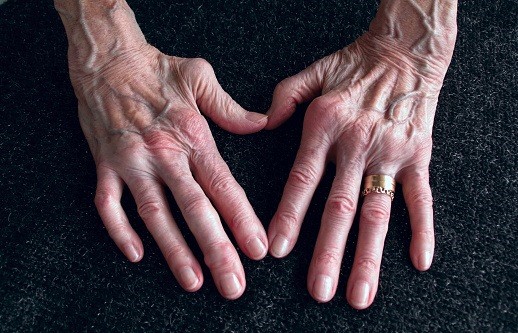
Rheumatoid arthritis (RA) is a chronic inflammatory disorder that can affect body joints. In some people, the condition can damage a wide variety of body systems, such as, the skin, eyes, lungs, heart and blood vessels.
An autoimmune disorder, RA occurs when our immune system mistakenly attacks own body’s tissues.
RA affects the lining of joints, causing a painful swelling that can eventually result in bone erosion and joint deformity.
The inflammation associated with RA is what can damage other parts of the body as well. While new types of medications have improved treatment options dramatically, severe RA can still cause physical disabilities.
Symptoms
Signs and symptoms of RA may include:
- Tender, warm and swollen joints
- Joint stiffness that is usually worse in the mornings and after inactivity
- Fatigue, fever and loss of appetite
Early RA tends to affect the smaller joints first — particularly the joints that attach our fingers to our hands and our toes to our feet.
As the disease progresses, symptoms can spread to the wrists, knees, ankles, elbows, hips and shoulders. In most cases, symptoms occur in the same joints on both sides of human body.
About 40% of people who have RA also experience signs and symptoms that don’t involve the joints. Areas that may be affected include:
- Skin
- Eyes
- Lungs
- Heart
- Kidneys
- Salivary glands
- Nerve tissue
- Bone marrow
- Blood vessels
Causes
Physicians don’t know what starts this process, although a genetic component appears likely. While your genes don’t actually cause RA, they can make you more likely to react to environmental factors — such as infection with certain viruses and bacteria which may trigger the disease.
Risk factors
Factors that may increase your risk of RA include:
- Gender – Women > men
- Age – RA can occur at any age, but it most commonly begins in middle age.
- Family history – If a family member has RA, you may have an increased risk of the disease.
- Smoking – It appears to be associated with greater disease severity.
- Excess weight – People who are overweight appear to be at a higher risk of developing RA.
Complications
RA can increase the risk of developing:
- Osteoporosis – Some medications used for treating RA, can increase the risk of osteoporosis — a condition that weakens your bones and makes them more prone to fracture.
- Rheumatoid nodules –These firm bumps of tissue most commonly form around pressure points, such as the elbows. However, these nodules can form anywhere in the body, including the heart and lungs.
- Dry eyes and mouth –People who have RA are much more likely to develop Sjogren’s syndrome, which decreases the amount of moisture in the eyes and mouth.
- Infections –Rheumatoid arthritis itself and many of the medications used to treat it can impair the immune system, leading to increased infections. Protect yourself with vaccinations to prevent diseases such as influenza, pneumonia, shingles and COVID-19.
- Carpal tunnel syndrome – If RA affects your wrists, the inflammation can compress the nerve that serves most of your hand and fingers.
- Heart problems – Rheumatoid arthritis can increase your risk of hardened and blocked arteries and inflammation of the sac that encloses your heart.
- Lung disease –People with RA have an increased risk of inflammation and scarring of the lung tissues, which can lead to progressive shortness of breath.
- Lymphoma – It increases the risk of lymphoma which is a group of blood cancers that develop in the lymph system.
.

